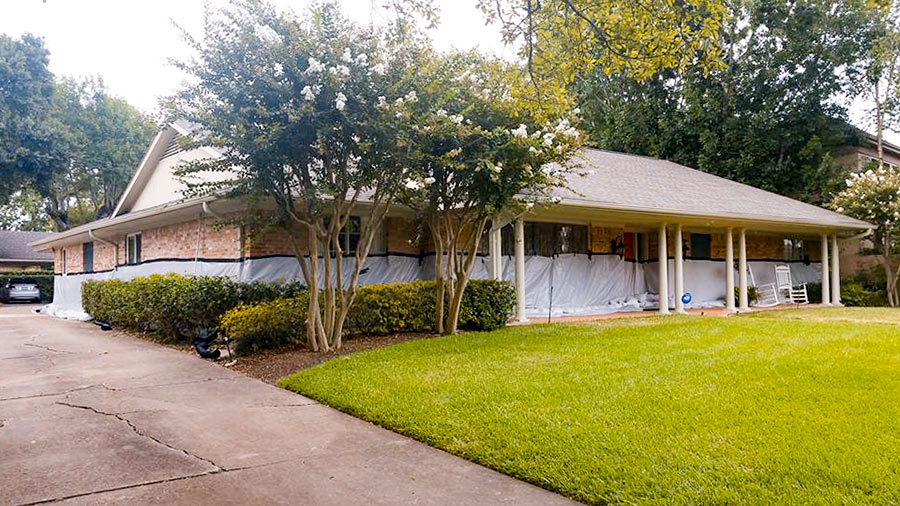
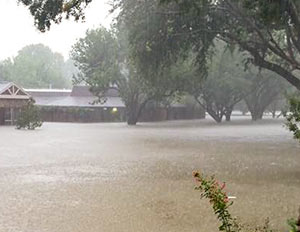 If you had been wondering whether the sandbag and tarp barrier (pictured at top) mustered around Kristin Massey’s Meyerland home was able to hold back the floodwaters once nearby Brays Bayou overflowed its banks a block to the north Monday night, here’s your answer: “We did all that we could, but it would never have been enough,” Massey wrote on Facebook the following morning.
If you had been wondering whether the sandbag and tarp barrier (pictured at top) mustered around Kristin Massey’s Meyerland home was able to hold back the floodwaters once nearby Brays Bayou overflowed its banks a block to the north Monday night, here’s your answer: “We did all that we could, but it would never have been enough,” Massey wrote on Facebook the following morning.
To prepare for the storm, Massey had spent close to $5,000 to arrange a perimeter defense using 18,000 pounds of sandbags. But the water reached the 9 ft. level on Braesheather Dr. a block south of Brays Bayou and just west of the 610 Loop (above) — and up to 4-and-a-half-ft. high inside her 1961 home:
***
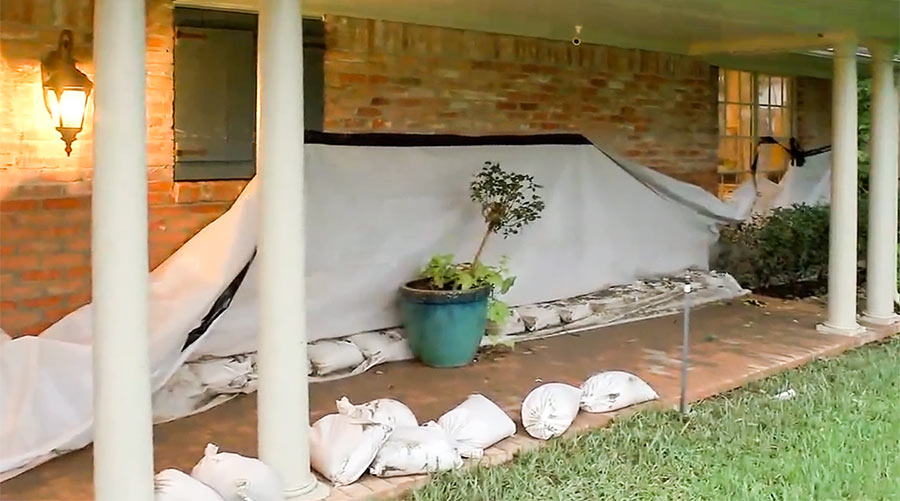
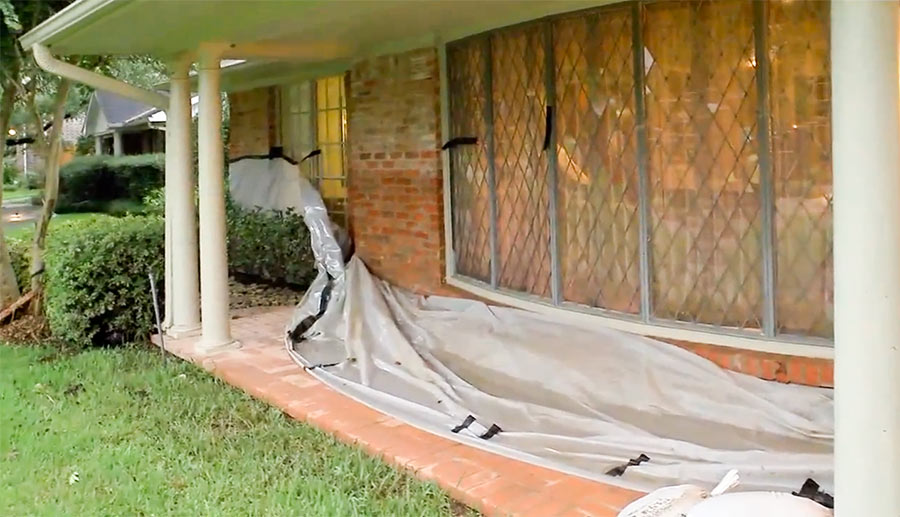
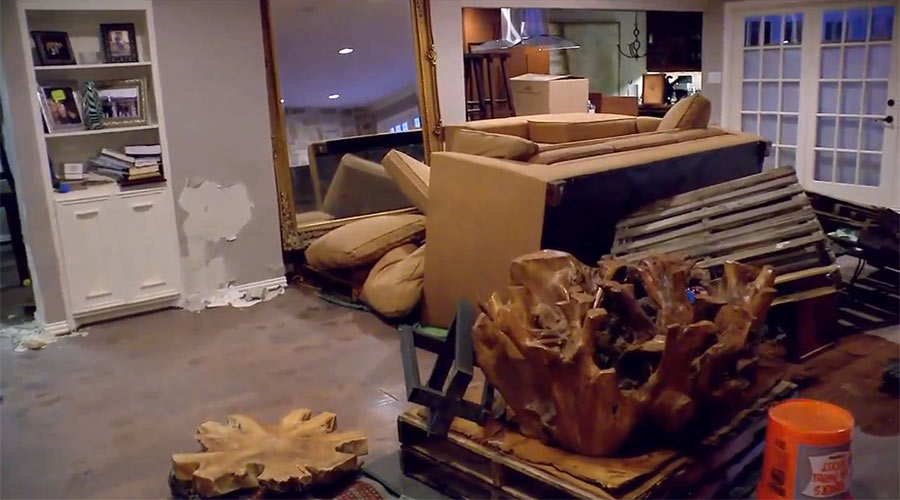
Massey says the home had never flooded prior to the 2015 Memorial Day and 2016 Tax Day floods, both of which caused extensive damage to the interior. “I’m tired of hearing this is a once-in-a-lifetime event — it’s not,” she later told abc13 reporter Steven Romo, as he took viewers on a tour of the flooded property. “There’s a problem. I mean this home had never flooded in 60 years.”
- Home barricaded by sandbag wall still flooded [abc13]
- 18,000 Pounds Of Sandbags Weren’t Enough To Protect This Houston Home [NPR]
- Previously on Swamplot:Â Sandbagging in Meyerland
Photos: Houston Public Media (top photo); Kristin Massey (flooding); abc13 (stills)Â


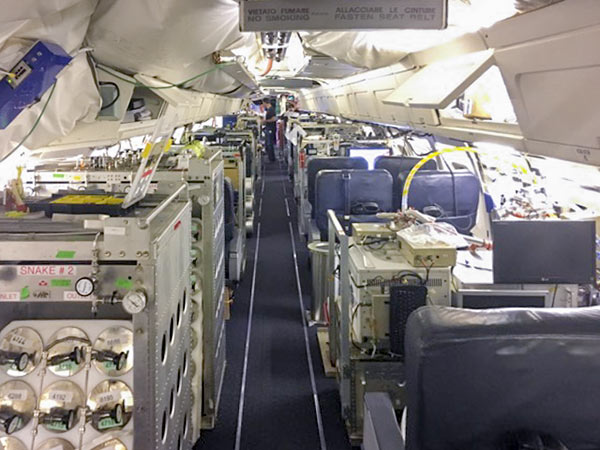


At least they tried to help themselves. If I wasn’t living in my car I would give them a donation to help pay for their sandbags. They deserve it.
I was rooting for them!!!
Maybe if the tarp went up to the ceiling? Hooked to the soffit like a shower curtain and hung with enough slack to secure the bottom with sandbags? This is an experiment that an engineer could take to the bank. Truly, I am sorry that they are having to deal with yet another flood.
What I want to know is did the sandbag work up to a certain level and failed only after the water went over the tarp? I noticed that they used tape on the top which I think could have lead to a catastrophic failure if even one piece came loose.
I saw a post on Facebook where someone use bags of water to keep water from entering into the home. Not sure if it worked but I thought it was a good idea.
Anyways, the insurance company should waive their deductible for the effort and cost of doing this.
It’s basically impossible for that set up to work with that much water. Tarps tear, water will leak in under the tarp, taping the top clearly failed. The only real solution is to sandbag the entire perimeter and have pumps pumping out the residual water that gets through. Granted the thickness needed for a sandbag wall to hold off that much water would make it a pretty intense prep job.
If it did work, and the water would get high enough, you would risk caving in the house under the sideways pressure. Still a neat idea, great effort, sorry it didn’t work.
I think the best solution is to start using building materials that withstand floods. Cement block, brick, ceramics, whatever it takes, just make your house as water tolerant as a bath tub. Keep the wires high, put the appliances on pedestals. Hose it down after the flood and move on.
So this is the third time this house has flooded in addition to the surrounding areas. Are they still able to get flood insurance? Is it still offered for homes in this area? I am curious as to how much money was spent to repair from the previous two floods and/or personal funds to replaces other items.
Why not make the effort to raise these home above the possible flood level, or is it still cheaper to go through the entire fix it up and wait for a flood process?
If you look at the flood education mapping tool, this general area is one of the largest flood plains close to the city. It may have not flooded before but now three times a charm and its only going to get worse a more land is developed within the water shed upstream. All of this water now gets funneled into a bayou with twists and turns that I believe slows the flow of water. Note I am not a hydrologist so please if anyone can tell me otherwise please do so.
Who gets the priority of maintaining their property over others who are displaced to enhance flood mitigation methods. Maybe all the new development should be removed back to pre-flooding levels.
Maybe the properties down stream should be removed to allow for the straightening and widening of the bayou and increase the potential increase of flooding once it hits the buffalo bayou.
Or maybe people should just rebuild with a new building type that will minimize flooding damage and change the character of the neighborhood everyone is used to.
I don’t know. There are too many variables to comprehend and they all cost money which no one is willing to spend because who has the money to do so anyways.
Please discuss amongst yourselves . I would like to hear your comments.
membag: Funny, our laundry room at a complex we own in Midtown has laundry machines on raised stands due to flooding. They’re about 2 feet off the ground. But it wasn’t ready for 5 feet of water. :(
first time it flooded was in 2015? I doubt it. I know that area well and it flooded all the time when i was a kid.
Maybe this homeowner should have used their $5,000 to buy some luggage..so they could move the F out of a known flood zone.
@Time For Lunch: Raising houses a few feet is reasonable. But 9 feet seems like a bit much. That’s just called having a 2-story house.